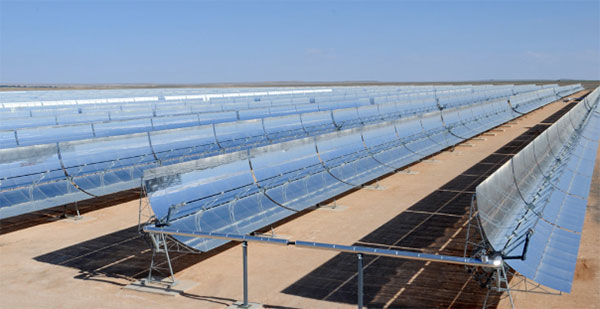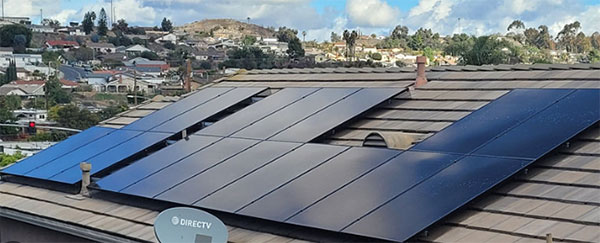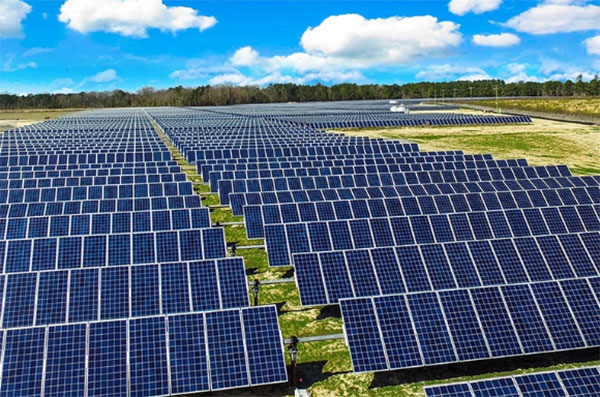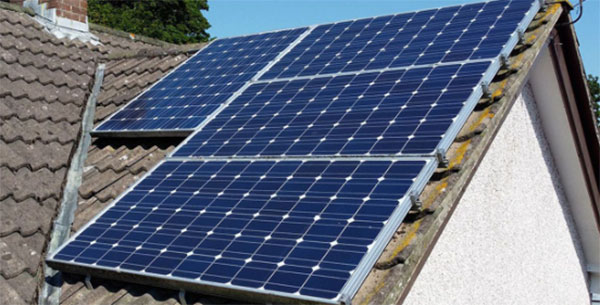Description
Solar cells offer cost-effective, renewable, and sustainable energy, ideal for developing countries' diverse geographical and economic conditions.

Solar Cell Basics
Understanding Solar Energy
Solar energy, harnessed from the sun, is a renewable and inexhaustible power source. At its core, solar energy involves converting sunlight into electrical energy. This process is critical for generating clean, sustainable power, especially in areas with high solar irradiance. Solar energy, distinct from fossil fuels, produces no harmful emissions, making it environmentally friendly.
Components and Functioning of Solar Cells
Solar cells, also known as photovoltaic cells, are the building blocks of solar panels. These cells convert sunlight into electricity through the photovoltaic effect. A typical solar cell comprises a semiconductor material, usually silicon, which absorbs photons from sunlight. This absorption generates free electrons, thereby creating an electric current.
Material and Efficiency
The choice of material in solar cells is pivotal. Silicon, the most commonly used material, comes in two main types: monocrystalline and polycrystalline. Monocrystalline silicon, known for its high efficiency, can convert up to 20% of solar energy into electricity. Polycrystalline silicon, while slightly less efficient at around 15%, is more cost-effective.
Cost and Budget Considerations
The cost of solar cells has been decreasing consistently, making solar technology more accessible. As of now, the average cost per watt ranges from $0.70 to $1.50. The total cost for installing solar panels in a residential setting can vary, but it generally falls within a few thousand dollars, depending on the system's size and specifications.
Size and Specifications
Solar cells come in various sizes, typically around 156 mm square for residential applications. The size and number of cells determine the overall power output of a solar panel. A standard panel, measuring about 1.6 square meters, can produce approximately 300 watts of power under ideal conditions.
Lifetime and Durability
Solar cells are known for their longevity and low maintenance requirements. Most solar panels come with a warranty of 25 years, and their lifespan can extend well beyond that, often up to 30 years. The degradation rate of solar panels is approximately 0.5% per year, ensuring sustained performance over time.

Economic Factors in Developing Countries
Energy Costs and Affordability
In developing countries, energy costs are a significant concern. These regions often face high prices for traditional energy sources due to infrastructure limitations and reliance on imported fuels. The introduction of solar energy presents a more affordable alternative. For instance, the cost of solar photovoltaic (PV) systems has dropped by over 80% since 2010. This reduction makes solar power a competitively priced option in many developing countries.
Key details on energy costs:
- Traditional energy sources can cost up to 10-20 cents per kilowatt-hour in some developing regions.
- Solar energy, in contrast, can cost as low as 4-6 cents per kilowatt-hour, depending on the region and scale of implementation.
Financial Benefits of Solar Energy
Reduced Energy Expenditure
- Households and businesses using solar panels can drastically reduce their electricity bills.
- In areas without existing power grids, solar energy can eliminate the need for expensive infrastructure development.
Job Creation
- The solar industry creates numerous jobs in manufacturing, installation, maintenance, and sales.
- For example, in India, the solar industry has created over 100,000 jobs in the past decade.
Long-term Financial Planning
- Solar panels offer a predictable energy cost over time, unlike fluctuating fossil fuel prices.
- The initial investment in solar panels typically pays off within a few years, leading to free or highly reduced electricity costs thereafter.
Increased Energy Independence
- By reducing reliance on imported fuels, countries can save significantly on energy costs.
- This independence also shields them from global energy market volatility.

Environmental Impact
Reduction in Carbon Footprint
The adoption of solar energy significantly reduces the carbon footprint. Solar panels produce electricity without emitting greenhouse gases, which are a major contributor to climate change.
Detailed Impact of Solar Energy on Carbon Emission Reduction:
- A typical residential solar panel system can reduce carbon emissions by approximately 3 to 4 tons per year.
- This reduction is equivalent to planting over 100 trees annually.
Sustainable Energy for the Future
Renewability of Solar Energy:
- Solar energy is inexhaustible, unlike fossil fuels which are finite.
- This ensures a long-term, sustainable energy solution.
Advancements in Solar Technology:
- Continuous improvements in solar technology enhance efficiency and reduce the environmental impact of solar panel production.
- For instance, newer solar cells use thinner layers of material, reducing the quantity of raw materials required.
Lifecycle Environmental Impact:
- Solar panels have a lifespan of about 25 to 30 years.
- Even considering the energy and resources used in manufacturing, the net environmental benefit of solar energy is overwhelmingly positive.
Compatibility with Ecosystems:
- Solar installations can be designed to minimize land use and can even be integrated into buildings (as rooftop installations).
- Solar farms can co-exist with agriculture, supporting biodiversity.

Accessibility and Implementation
Rural Electrification
Solar energy plays a critical role in rural electrification, especially in areas where traditional power grids are unavailable or too costly to install.
Key Aspects of Solar Power in Rural Electrification:
- Solar panels can be deployed in remote locations, providing electricity to areas previously without access.
- The cost for setting up solar panels in rural areas varies, but it is often lower than extending power grids. For example, the price of a basic solar home system can start from as low as $100 to $200.
- These systems typically have a power output ranging from 10W to 100W, sufficient to power basic household needs like lighting, charging, and small appliances.
Case Studies: Successful Implementations in Developing Regions
Example 1: Solar Power in Rural India
- Many villages in India have successfully implemented solar power systems, providing electricity to thousands of households.
- The implementation cost per household can range between $500 to $1,500, depending on the system's size and complexity.
- The government and various NGOs have supported these initiatives, contributing to their success.
Example 2: Kenya's Solar Microgrids
- In Kenya, solar microgrids have been established to electrify rural communities.
- These microgrids typically cost around $1,200 to $1,500 per kilowatt to install.
- They have proven to be reliable and efficient, with a lifespan of 20-25 years for the solar panels.
Technological Adaptation
Innovations in Solar Technology for Developing Countries
Solar technology has seen significant innovations tailored to meet the unique needs of developing countries. These advancements are not only improving efficiency but also making solar power more accessible and practical in these regions.
Key Innovations Include:
- Portable Solar Solutions: These include solar lanterns and small solar panels for individual homes. For instance, portable solar lanterns can cost as little as $5 to $20.
- Improved Battery Storage: Advances in battery technology allow for more efficient storage of solar energy, essential for areas with inconsistent sunlight. Modern solar batteries can have a lifespan of 5 to 15 years.
- Low-Cost Photovoltaic (PV) Cells: Recent developments in PV cell technology have led to cheaper and more efficient solar panels. The efficiency of these cells can range from 15% to 22%.
- Solar-Powered Water Pumps: These pumps are vital for irrigation and drinking water in remote areas, costing between $300 to $2,000 depending on capacity and features.
Overcoming Technical Challenges
Several technical challenges need to be addressed to optimize the use of solar energy in developing countries.
Major Challenges and Solutions:
- Intermittency of Solar Power: To tackle this, integration with other renewable sources and improving battery storage technology are key.
- Installation and Maintenance Skills: Training local technicians for installation and maintenance reduces reliance on external experts and fosters self-sufficiency.
- Adapting to Local Environments: Developing solar equipment that can withstand local environmental conditions like dust, humidity, and temperature extremes is essential. For example, solar panels designed for high-temperature climates have heat-resistant properties.
- Financial Accessibility: Innovations in financial models, such as pay-as-you-go systems, have made solar technology more accessible. These models allow users to pay for solar energy in small, affordable installments.

Policy and Governmental Support
Role of Government in Promoting Solar Energy
Governments play a crucial role in the advancement and adoption of solar energy. Their policies and initiatives can significantly influence the growth of the solar industry.
Strategies Employed by Governments:
- Subsidies and Financial Incentives: Many governments offer subsidies to reduce the cost of solar installations. For example, a subsidy can cover 20% to 30% of the total installation cost.
- Feed-in Tariffs: These tariffs allow solar energy producers to sell excess electricity back to the grid at a premium rate, incentivizing solar panel installation.
- Renewable Energy Targets: Setting ambitious renewable energy targets encourages the growth of solar energy. For instance, a country might aim to generate 40% of its electricity from renewable sources by 2030.
- Public Awareness Campaigns: Educating the public about the benefits of solar energy can increase adoption rates.
International Aid and Collaborations
International cooperation is vital in promoting solar energy, especially in developing countries.
Examples of International Efforts:
- Funding and Grants: International organizations often provide funding for solar projects in developing countries. For example, a grant of $50 million to $100 million can support large-scale solar implementations.
- Technology Transfer: Developed countries collaborate with developing nations to transfer technology and expertise in solar energy.
- Collaborative Research and Development: International partnerships in R&D lead to innovations in solar technology. These collaborations often focus on making solar panels more efficient and cost-effective.
- Climate Agreements: Global agreements, like the Paris Agreement, play a significant role in shaping policies and commitments toward renewable energy.








